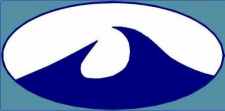Keith Mackie
Consulting Coastal and Harbour Engineer
Text Books and Training Programmes
BASIC COASTAL & HARBOUR ENGINEERING
This unique book, BASIC COASTAL & HARBOUR ENGINEERING has been written as a first aid reference, not formal, advanced coastal engineering. Normal engineering numeracy will be sufficient and it has been designed to be easily understandable. As such it is ideal for engineers who only occasionally have to do with the sea and for planner and environmentalists.
It does, however, have a very wide of coverage not normally found in other textbooks. It covers both wave and shore processes and harbour engineering aspects that are not normally included in the same book. It provides a very useful reference and refresher for specialists and an introduction for those planning to enter in the field. In this respect, it follows in the style of R.R. Minikin.
The mathematical aspects are not ignored but are reduced to usable “plug–in” formulae with clear indications on how they are to be used. The book includes large non-numerate sections describing the various aspects of the subject.
THE PRACTICE OF DRY DOCKING SHIPS
The trade of Dockmaster, worldwide, is a very small one compared to other trades and occupations. There is no formal establishment of dockmasters or of their trade. By and large dockmasters end up in the business without any deliberate intention of doing so. They learn the trade simply by doing the work. There is no formal path to becoming a dockmaster although most dockmasters have some prior trade they bring to the job.
The textbook DRY DOCK MANUAL has been written to provide them with a formal reference to their work.
Technical material has been simplified so as to give an understanding of the topics and an ability to use the formulae without a need for mathematics. Those with advanced technical backgrounds can look up the standard theories for themselves and the text and the course will provide them with an insight into the application of these theories and the intricacies of dry-docking that is not available elsewhere.
By using the test book, Dockmasters should be able to design safe and efficient procedures for their facilities and be aware of the potential dangers in dry docking, to recognise the danger signs and know when to call in expert help.
